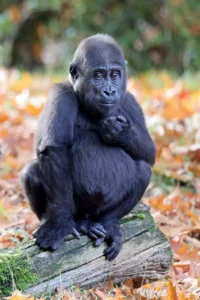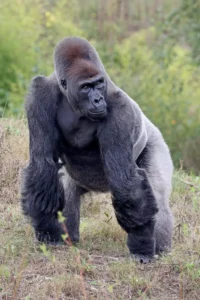Gorillas, the majestic and powerful primates, have always been a subject of fascination for many. Their dietary habits, in particular, are intriguing given their immense size and strength. So, what sustains these gentle giants? Let's delve into the world of gorillas and explore their dietary preferences.
Key Takeaways:
- Gorillas are primarily herbivores.
- Their diet varies based on subspecies and habitat.
- They consume a significant amount of vegetation daily.
- Gorillas are selective foragers and do not overexploit their food sources.
- They rarely drink water due to the high water content in their food.
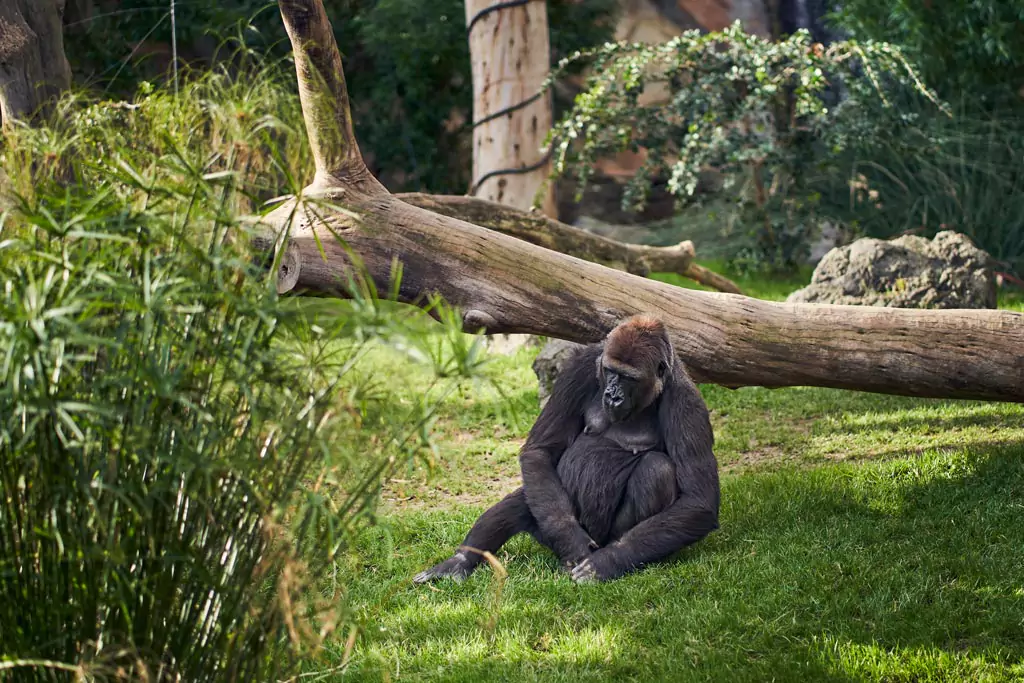
Food Preferences & Resources
The composition of a gorilla's diet is influenced by its subspecies and the season. Here's a breakdown:
Western Lowland Gorilla (Gorilla gorilla gorilla):
- Consumes parts of at least 97 plant species.
- About 67% of their diet is fruit.
- 17% comprises leaves, seeds, and stems.
- 3% includes termites and caterpillars.
Eastern Lowland Gorilla (Gorilla beringei graueri):
- Consumes parts of at least 104 plant species.
Mountain Gorilla (Gorilla beringei beringei):
- Consumes parts of at least 142 plant species.
- Due to high altitudes, they have limited access to fruit, consuming only 3 types.
- About 86% of their diet consists of leaves, shoots, and stems.
- 7% is roots, 3% is flowers, and 2% is a mix of fruit, ants, snails, and grubs.
Cross River Gorilla (Gorilla gorilla diehli):
- This subspecies is not as extensively studied.
- Their diet includes fruit, leaves, stems, piths, and some invertebrates.
Gorillas primarily rely on vegetation such as leaves, stems, roots, vines, herbs, trees, and grasses. Despite the relatively low nutritional quality of this vegetation, it's available year-round, allowing gorillas to thrive.
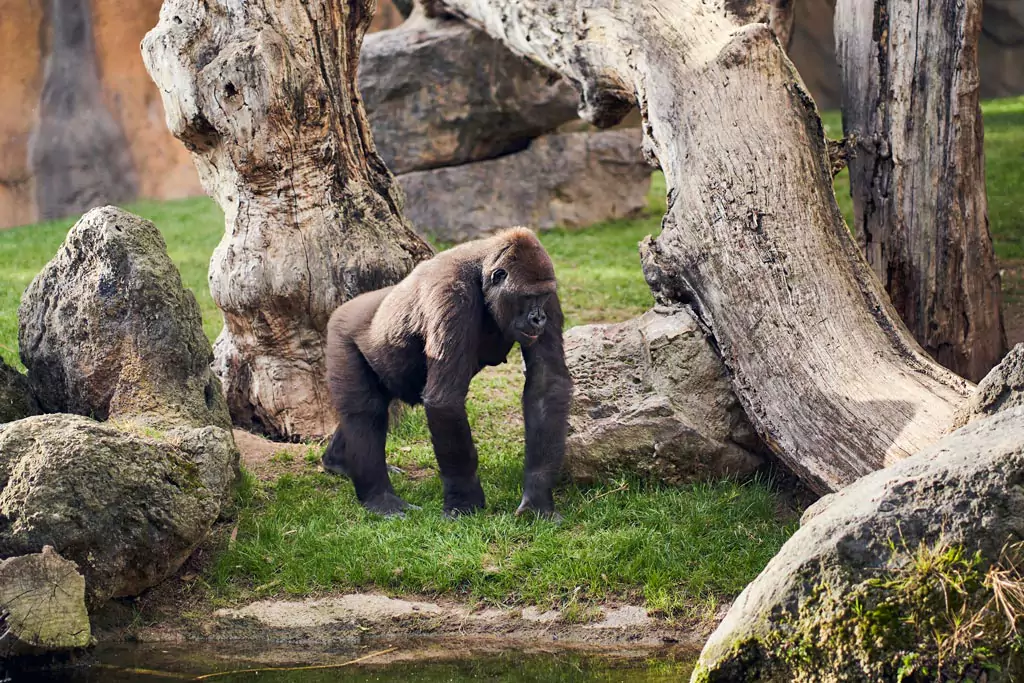
Food Intake
An adult male gorilla can consume an impressive amount of over 18 kg (40 lbs.) of vegetation daily. This high intake is essential as the vegetation they consume, although abundant, is not densely packed with nutrients. Interestingly, gorillas rarely drink water in the wild. The reason? Their diet, rich in succulent vegetation, provides them with ample hydration. This vegetation can be composed of almost half water, and the morning dew provides an additional source of hydration.
https://www.youtube.com/watch?v=d9rY-1ofFCU
Methods of Collecting Food
Gorillas are not just strong; they're smart foragers. They use their incredible strength to break apart tough vegetation. For instance, an adult male can effortlessly shred a whole banana tree to access the tender interior pith. Their selective foraging habits mean they might only consume specific parts of a plant, be it the leaves, pith, stalk, or roots. Their agile lips and dexterous hands enable them to manipulate vegetation and extract the parts they desire.
Moreover, gorillas are conscious about not overexploiting a particular area for food. They crop vegetation in a manner that promotes quick regrowth. There have even been instances where gorillas use the hair on the back of their hands to absorb water, which they then drink by sucking.
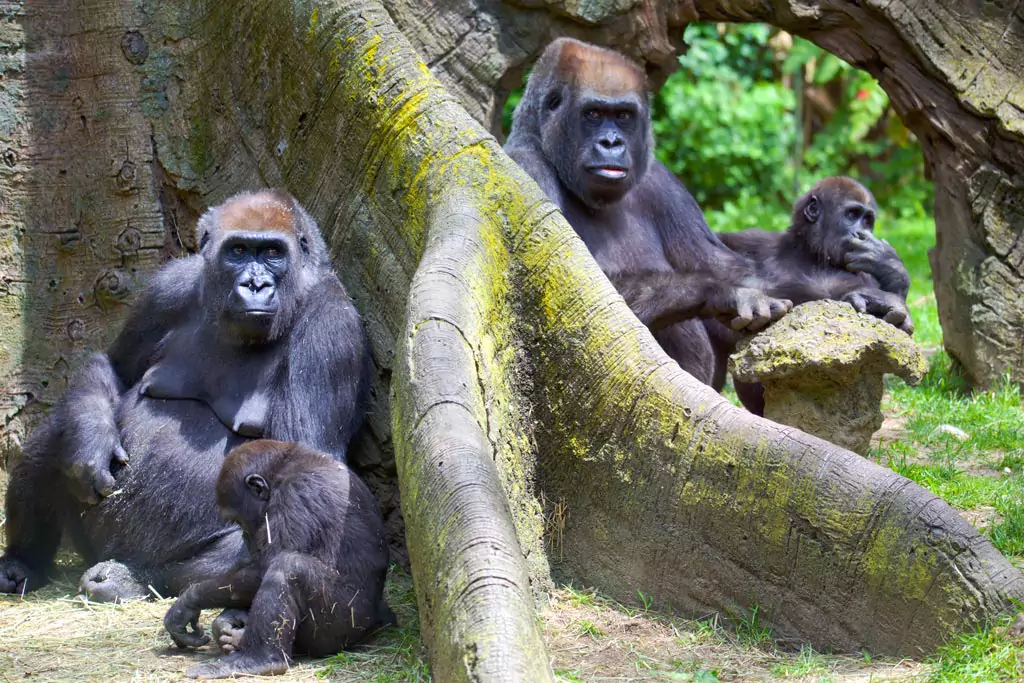
Dietary Adaptations
Gorillas have evolved several adaptations to process their fibrous diet. Their large and robust jaw muscles, along with flat and broad molars, help them grind tough plant material. Their long intestines aid in the digestion of fibrous plants, extracting maximum nutrients.
https://youtube.com/watch?v=Nq2NPHgXAlI
Impact on Ecosystem
Gorillas play a crucial role in their ecosystem. By consuming fruits, they aid in seed dispersal, ensuring the regeneration of forests. Their foraging habits also help in controlling the vegetation, maintaining a balance in the ecosystem.
Frequently Asked Questions (FAQs) About Gorillas
What do gorillas eat?
Gorillas primarily adhere to a vegetarian diet, consuming stems, bamboo shoots, and fruits. Interestingly, Western lowland gorillas also savor termites and ants, often breaking open termite nests to feast on the larvae.
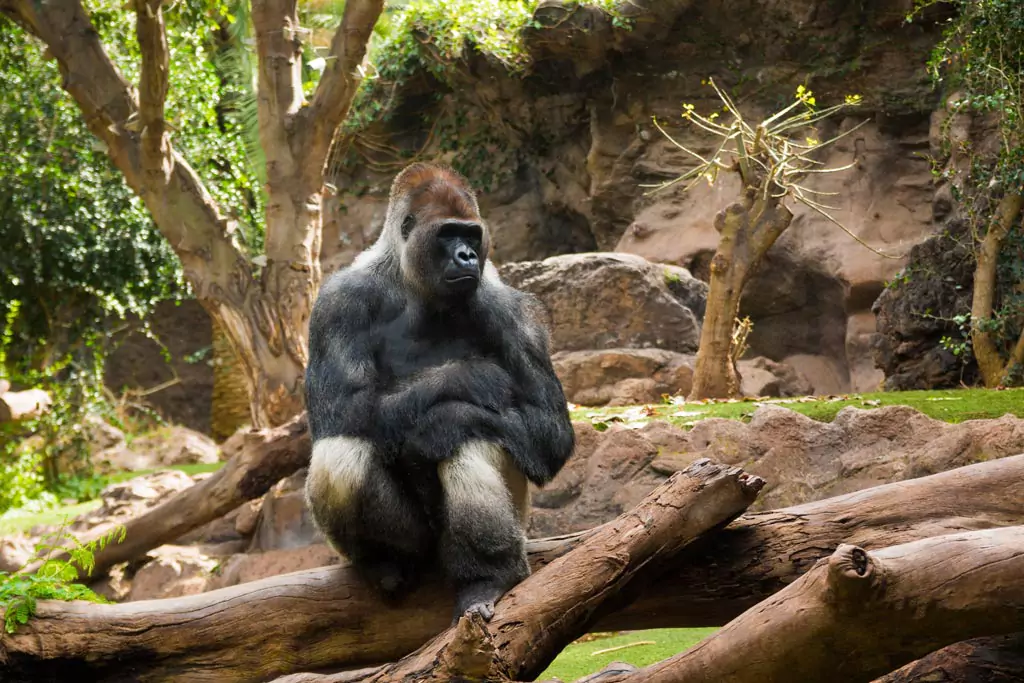
Do gorillas live alone?
No, gorillas are social animals. They move in family groups that can range from just a few members to more than 40. Typically, a dominant male leads these groups and can hold this position for several years.
How closely related are gorillas to humans?
Gorillas share a staggering 98.3% of their DNA with humans, making them our closest relatives after chimpanzees and bonobos.
https://youtube.com/watch?v=ZnHQtFa8YSw
What threats do gorillas face?
Gorillas face several threats, including poaching, diseases like Ebola, and habitat destruction. Most gorillas live outside protected areas, making them more vulnerable. Organizations like WWF are working tirelessly to establish new gorilla sanctuaries, especially in regions like Congo.
How big do gorillas get?
Adult male gorillas can weigh up to 440 pounds and stand six feet tall when on two legs. Mature males, known as "silverbacks," get their name from the distinctive white hair that develops on their back around the age of 14.
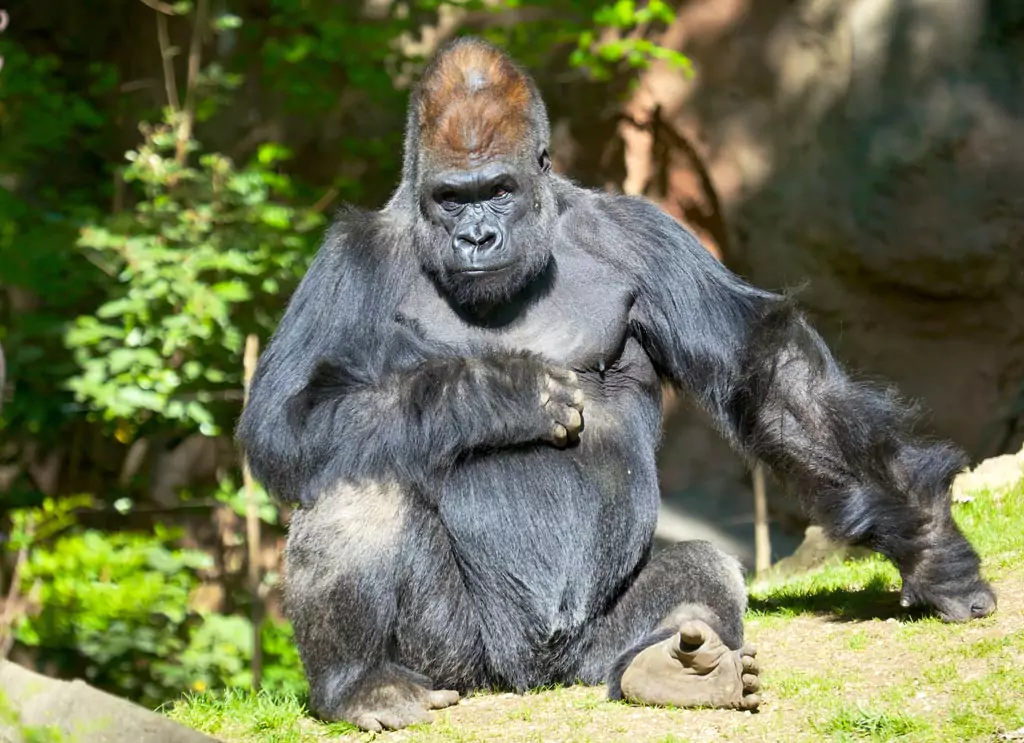
How often do gorillas give birth?
Female gorillas have a gestation period of 8.5 months and care for their young for several years. Typically, they give birth to one baby every four to six years. This slow reproductive rate makes it challenging for gorilla populations to recover from declines.
Does wildlife crime affect gorillas?
Yes, the illegal trade of gorillas and other great apes is a significant issue across Central Africa. Organizations like WWF collaborate with partners to monitor this trade and advocate for stricter wildlife laws.
https://youtube.com/watch?v=CEt8G-SAn0o
Gorillas in Popular Culture
Gorillas have always been a significant part of popular culture, from movies to books and even in music. Their human-like behaviors, combined with their sheer strength and size, make them a favorite among storytellers.

